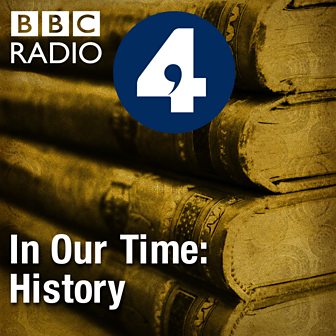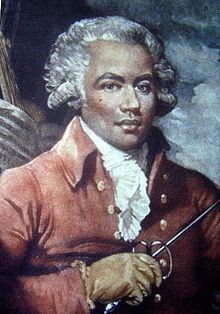I started out to write one cute post about men in Tennessee
spotting a strange creature in 1794. But that led me into the settlers’ wars against the
Cherokee, and how the
law treated
slavery in pre-statehood Illinois, and today well into the ante-bellum republic.
I left
Harry Williams, allegedly aged sixteen in 1814, indentured to John Beaird, Jr., for the next eighty years. That was how Beaird and others got around the
Northwest and Indiana Territories’ laws against slavery.
John Beaird, Jr., died before the end of that year, and Joseph Beaird took over Harry’s indenture as the estate administrator. Then Joseph died in 1827, and Harry worked for other Beaird relatives for another ten years.
In 1828, the Illinois Supreme Court ruled that such indenture contracts couldn’t be inherited, and I can’t help but wonder if the family delayed formally settling Joseph’s estate for so long in order to keep advantage of Harry’s labor.
In any event, in 1837 Beaird descendants sold Harry’s remaining decades of indentured servitude to Vital Jarrot (1805-1877), a rising young attorney related to the family by marriage. Jarrot was descended from some of Illinois’s early
French settlers. He had studied at Georgetown University, and Gov.
John Reynolds had made him adjutant of the state
militia during the Blackhawk War of 1832.
Soon after that sale, Harry, now close to forty years old, ran away. He took the surname of Williams. The record doesn’t say where he worked. But some years later, Jarrot spotted Williams and, with another servant, tried to recapture him. At one point Williams “was prostrate on the ground with his foot fastened to the stirrup, by which a horse dragged him along on the ground.” Nevertheless, he persisted.
In 1843 Williams managed to sue Jarrot for trespass by force and arms. Jarrot’s legal team presented testimony from witnesses, including former governor Reynolds, about the chain of ownership. Following the judge’s instructions, the jury ruled not only that Jarrot was innocent of the charges but that Williams was bound to him for the rest of the indenture.
But then a higher court found several errors by that judge. Based on new evidence, that court decided that Williams had actually been sold back in 1815—to none other than Reynolds! That made the chain of ownership leading to Vital Jarrot unenforceable.
Williams v. Jarrot became a landmark case in Illinois, not because of what it said about slavery but because of what it said about admissible evidence.
Also in 1843, Vital Jarrot was a witness in the
Jarrot v. Jarrot lawsuit, in which a bondsman sued another Jarrot family member for back wages. Showing how small and entangled this world was, the other witness in that case was the man who had sold Harry Williams to Jarrot back in 1837. That suit took a couple of years to be decided, but in 1845 the Illinois Supreme Court ruled there was no exception to the state’s laws against owning slaves for descendants of French settlers.
Two years later, on 22 June 1847, Vital Jarrot gave up his claim on Harry Williams,
formally emancipating him from slavery and indenture. The next year, Illinois adopted a new constitution that banned slavery outright (though five years later it enacted a law making it nearly impossible for free black people to settle in the state). I don’t have any information on what happened to Williams after he became free.
As for Vital Jarrot, he seems to be a classic mid-nineteenth-century American character, jumping from one enterprise to another. He grew up in Cahokia, son of the
local grandee. In the late 1830s and early 1840s he was busy overseeing dikes, a coal mine, the state’s first railroad, and a newspaper to build what is now East St. Louis, Illinois. Jarrot served that town as mayor and state legislator. Then he got wiped out in a flood in 1844—just as those lawsuits were going against him and his family.
To rebuild his fortunes, Jarrot led a wagon train west to the California gold fields in 1849. That worked well enough that he was back in the Illinois legislature in the late 1850s, a contender for such posts as speaker of the house and lieutenant governor. By then Jarrot was a Republican, evidently leaving his slave-owning past behind. He still had time for other enterprises; in 1859 the
Chicago Tribune reported that Jarrot had set out to Pike’s Peak and found a silver mine.
Jarrot’s experience traveling west was valuable in January 1865 when he applied to be the federal government’s Indian agent at Fort Laramie. He also called on his acquaintance with President
Abraham Lincoln, going back to the Blackhawk War and Illinois politics. Lincoln endorsed him, writing, “I personally know this man—Vital Jarrot—to be one of the best of men; & as I believe, having peculiar qualifications for the place.” (Another of Jarrot’s contacts in that job hunt was Sen.
Lyman Trumbull, previously the lawyer for the enslaved plaintiff in
Jarrot v. Jarrot.)
So Jarrot headed to the Dakota Territory at age sixty. His father had traded with the Natives along the Mississippi in the years after the Revolution, so he was really returning to the earliest family business. Jarrot seems to have been eager to make peace between the U.S. of A. and the Sioux, pushing leaders of both sides to negotiate, though without quick success. In 1867 and 1868 he was in Washington, witnessing treaties. Then he returned to Illinois for another bout of business enterprises, including the East St. Louis Co-operative Rail Mill Company.
In 1875, Jarrot heard about the new gold rush in the Black Hills. He sold all his businesses and headed out again. He died in the Dakota Territory, “of exposure and toil,” on 5 June 1877.











.jpg/179px-Arthur_Young_(1741-1820).jpg)



